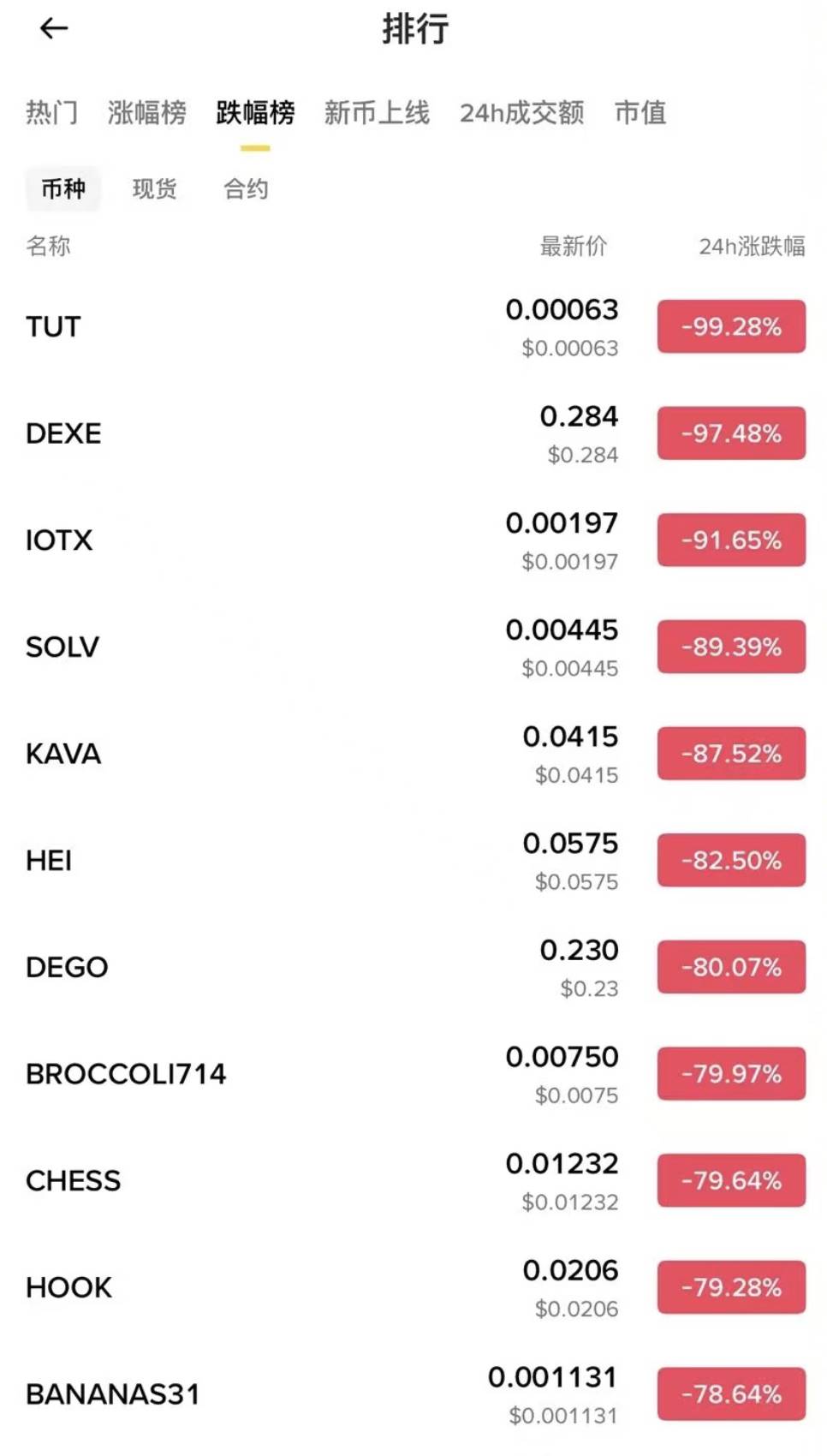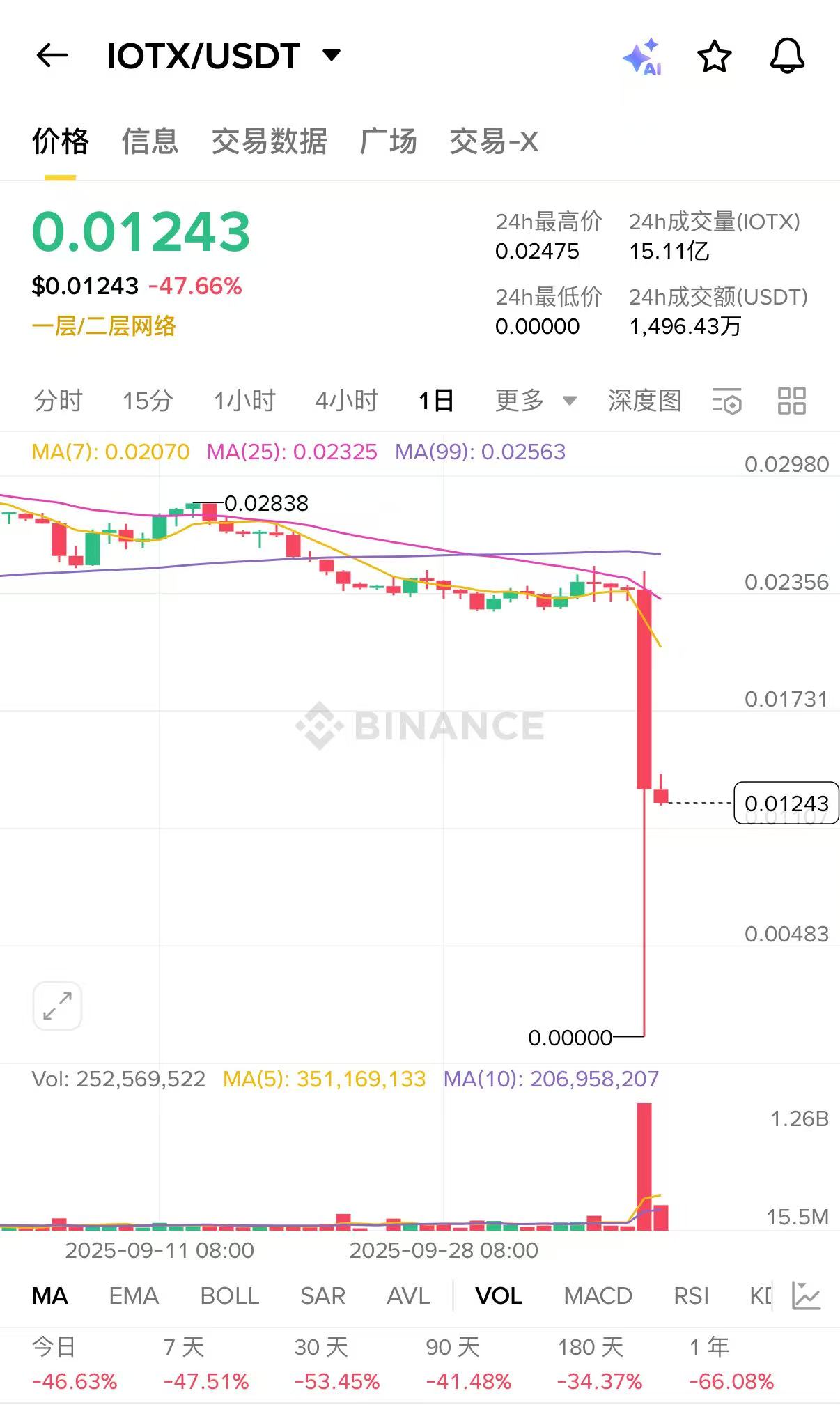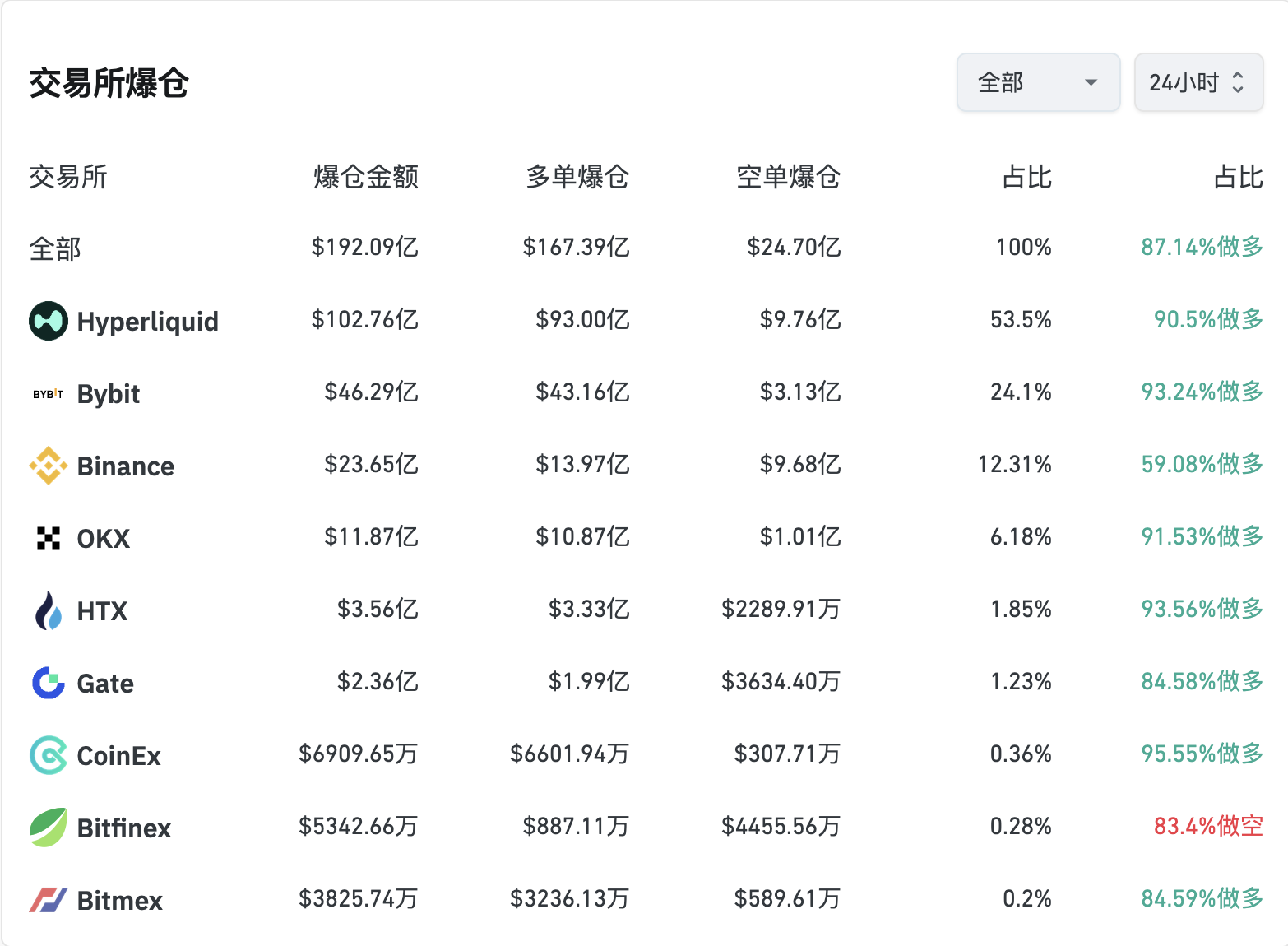Survival is everything.
Author: Min, Deep Tide TechFlow
After March 12 and May 19, the cryptocurrency world has added another day of market crash commemoration—October 11.
Bitcoin once fell below $110,000, USDE decoupled, and altcoins experienced a cliff-like drop, with many projects' prices dropping to zero in just a few minutes. Yes, it really went to zero.


Coinglass data shows that as of 9 AM on the 11th, the 24-hour liquidation amount reached $19.2 billion, with 1.64 million people liquidated, and the largest single liquidation order exceeded $200 million.
However, this data may only be the tip of the iceberg. According to relevant practitioners, the real liquidation data far exceeds what is publicly available. "Binance's liquidation data should far exceed that of Hyperliquid and Bybit," according to Coinglass data disclosure, Binance's liquidation data is currently only one-fifth of Hyperliquid's.
Cryptocurrency data analyst MLM (@mlmabc) believes the real liquidation data in the market is around $30-40 billion.

In the past, we comforted ourselves that the market is no longer what it used to be, becoming more refined, and that we would not see turbulence like March 12 again. However, we have once again been ruthlessly slapped in the face by reality.
On the surface, this appears to be a sudden black swan shock, but what truly caused the market collapse may be the long-accumulated leverage boom and the structural flaws in the market maker system.
The trigger for this crash was Trump.
On that day, he suddenly announced a new round of tariffs on Chinese goods. The China-U.S. trade friction escalated suddenly, putting global risk assets under pressure. Risk aversion sentiment surged, and capital fled to the dollar and U.S. Treasury bonds, while cryptocurrencies, as representatives of risk assets, became the first to be sold off.
This became the last straw that broke the market's back.
However, a mere tariff announcement cannot explain why the entire cryptocurrency market experienced an avalanche in an instant. The real key lies in the fact that the market's false prosperity had long been built on high leverage.
In the past few months, Bitcoin and mainstream assets have repeatedly hit new highs, but most of the funds behind this were not long-term capital; they were leveraged funds stacked through contracts, loans, and liquidity mining. When negative news hit, the first to be affected were these high-leverage long positions. Once the support level was breached, forced liquidations triggered one after another, and the selling pressure grew larger, plunging the market into a chain liquidation of "longs killing longs."
The most typical case may be USDE. Since the official launch of the 12% subsidy policy, a large number of users have participated in circular loans for arbitrage. This mechanism was highly attractive during the bull market, drawing in a lot of funds in a short time and becoming an important engine driving market prosperity. However, on October 11, when the tariff shock triggered a sell-off, USDE showed a clear decoupling, briefly falling below $0.66, becoming a symbolic event of this crash.
More critically, the market maker mechanism completely failed during this crash.
Bugsbunny, a staff member at Greeks.live, analyzed that the current active market makers have limited funds, and they concentrate their main liquidity resources on Tier 0 and Tier 1 projects, such as BTC and ETH, while only providing a little support for mid to long-tail altcoins.
After the collapse of Jump, the market's liquidity supply relied more on these active market makers, but they lacked a complete tail risk hedging mechanism and could only cover regular market conditions. In extreme situations, the funds were simply insufficient to provide a bottom.
When Trump's tariff news ignited market panic, market makers had to prioritize the safety of large projects, withdrawing funds originally allocated to smaller coins. As a result, the altcoin market completely lost its counterparties, and the selling pressure came down with no one to take it, leading to a near "free fall" in prices. Tokens like IOTX once dropped close to zero, which was the most direct manifestation of liquidity exhaustion.
In fact, with the surge of new projects this year, the funds of active market makers have long been overloaded, and the market lacks sufficient derivatives to hedge tail risks. This time was merely a complete unveiling of the cover.
Moreover, Bugsbunny believes that what is even more fatal is that this crash occurred on a Friday night (Saturday morning in Asia), when market makers have clear working hours in both Europe and the U.S. If this had happened during the trading hours of a weekday, liquidity might have been restored much earlier.
"But it just so happens that today is Friday; everything is too coincidental."
It is both danger and opportunity; some rejoice while others mourn.
On October 10, before Trump's statement, a certain early Bitcoin investor continuously increased their short positions on BTC and ETH on Hyperliquid, with a total position exceeding $1.1 billion, making a fortune after the crash. Others took advantage of the chaos, using USDE, BNSOL, and WBETH for arbitrage after decoupling…
Overall, the October 11 crash was not due to a single reason but rather a conspiracy of three forces: the policy shock of a macro black swan, the structural fragility under leveraged prosperity, and the collapse of market maker liquidity protection.
In the morning, looking at the sorrowful posts in my social circle, I felt the cruelty and ruthlessness of the market.
The cryptocurrency market has never been a smooth highway; it is more like a sea filled with hidden reefs. The prosperity of a bull market often carries the illusion of leverage, while black swans always lurk in the corners, ready to strike at any moment. For retail investors, the most important thing is not to chase after quick profits but to survive.
As long as one can survive, there is a chance to stand on a new starting point in the next cycle. Once liquidated in extreme conditions, there may never be a chance to return to the table.
Let me repeat, survival is everything.
免责声明:本文章仅代表作者个人观点,不代表本平台的立场和观点。本文章仅供信息分享,不构成对任何人的任何投资建议。用户与作者之间的任何争议,与本平台无关。如网页中刊载的文章或图片涉及侵权,请提供相关的权利证明和身份证明发送邮件到support@aicoin.com,本平台相关工作人员将会进行核查。




